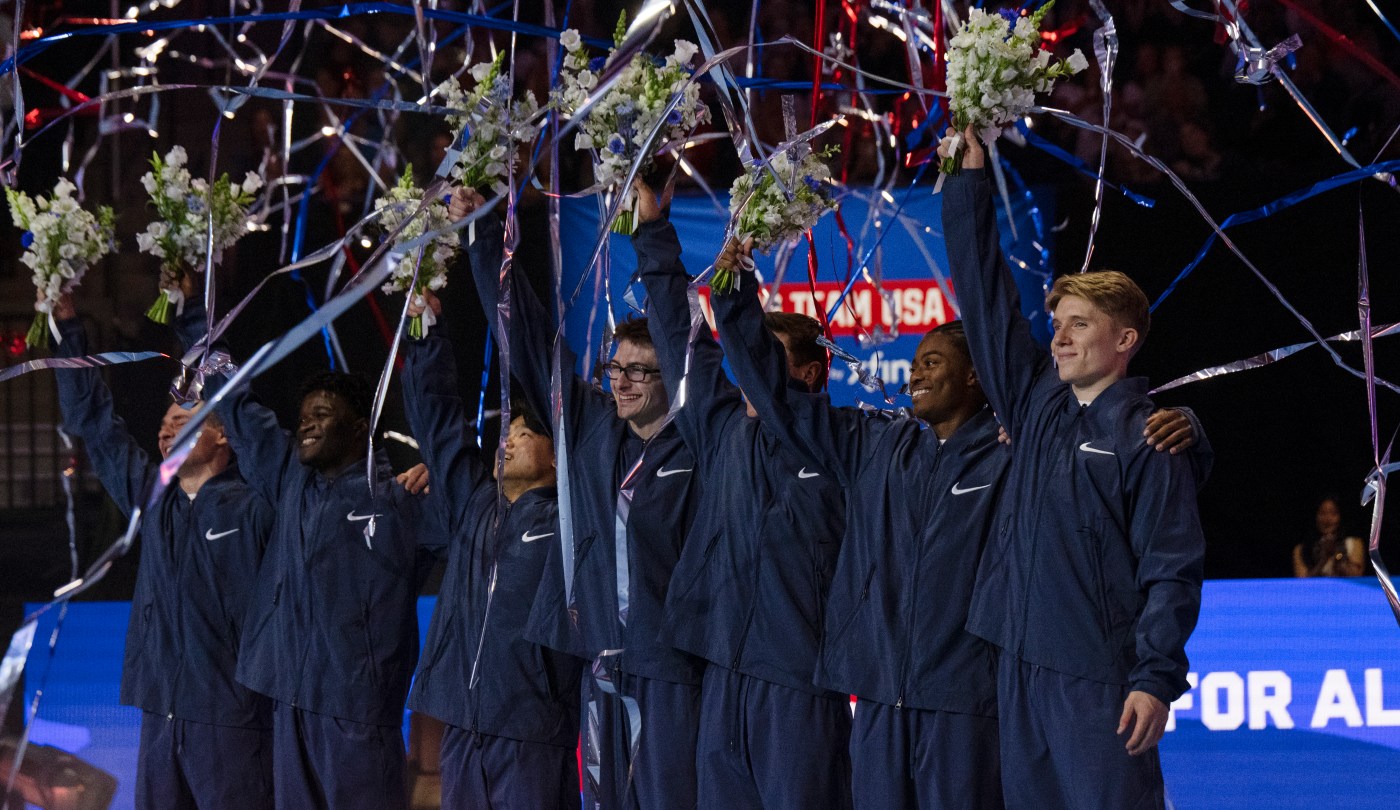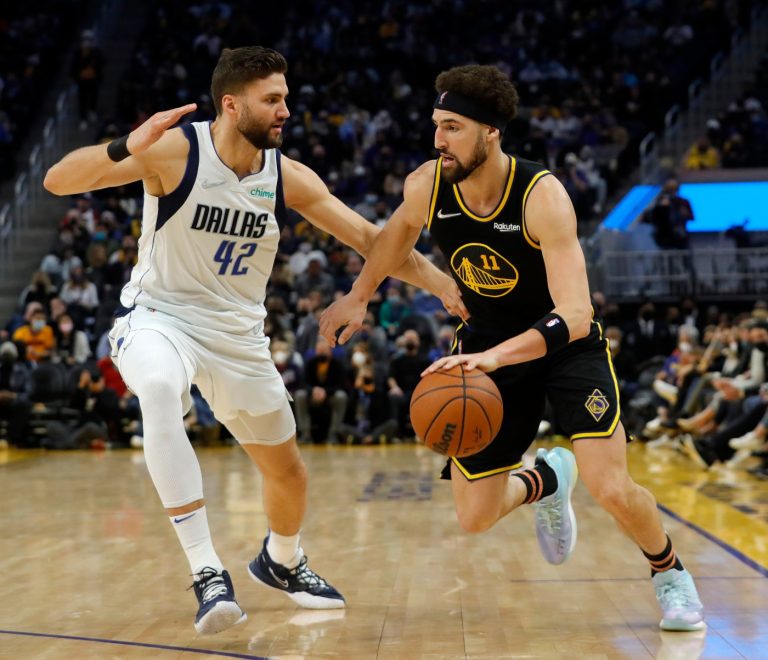MINNEAPOLIS — The Stanford men have built a dynasty in NCAA gymnastics, and now they’re taking that to the 2024 Summer Olympics in Paris.
Former Cardinal Brody Malone and current standout Asher Hong earned two of the five spots on the U.S. team Saturday after two days of competition at the Olympic trials in Minneapolis. They join trials champ Fred Richard, Paul Juda and Stephen Nederosik on the team, with Stanford’s Khoi Young and 2021 Olympian Shane Wiskus as traveling alternates.
This is the second Olympics in a row when three Stanford men’s gymnasts are part of the U.S. delegation, though in Tokyo two of them were alternates.
Richard qualified for the team automatically by winning the all-around competition and placing top three on three events. His two-day score of 170.5 held off a late-charging Malone by just 0.2 points.
Juda finished fourth with 168.85 points, followed by Hong with 167.65. Nederosik, a pommel horse specialist and the 2021 world champion, ranked second in that event.
The biggest surprise was Wiskus, who had the meet of his life in his home state and finished third with 169.65 points. The selection committee, relying largely on simulations to determine the highest scoring team, ultimately determined the other gymnasts better fit into the puzzle that the program hopes will result in the first U.S. men’s gymnastics team medal since the 2008 team won bronze in Beijing.
“We have a chance to win a medal,” Malone said, “and that’s what we’re going over there to do.”
Stanford gymnasts will play a key role in that effort.
Though three will make the trip and two will compete next month, six of the 16 athletes competing at the trials had Stanford connections, including four who were on the team that won a record-tying fifth-consecutive NCAA championship in April. Even more Cardinals competed at nationals earlier this month in Texas.
“It brings the best out of me,” Hong, a sophomore last year, said. “We’re all brothers. Like we all literally love each other. So I can’t express enough how big of a support system I have at Stanford with the guys on the team.”
The two other Stanford gymnasts, Colt Walker and Jeremy Bischoff, finished 10th and 11th in the all-around at the trials, while alum Curran Phillips had the highest total score on his primary event, parallel bars.
Founded in 1891, five years before the first modern Olympics, Stanford’s men’s gymnastics program had produced three U.S. Olympians prior to this weekend, including Malone.
Now Malone joins Steve Hug (1972 and 1976) and Jair Lynch (1992 and 1996) in going to a second Olympics. Additional Stanford gymnasts have competed in the Games for other countries.
Lynch remains the only Cardinal men’s gymnast to win an Olympic medal, having taken silver on parallel bars in his second trip to the Games.
Malone, the 2022 world champion on high bar, could be primed to change that.
That the 24-year-old was even competing this weekend was a feat in itself. Sixteen months ago, while competing at an event in Germany, Malone landed awkwardly on his high bar dismount and went home with a dislocated knee, fractured tibia and torn ligaments.
Three surgeries later, he returned to competition in January, and by the U.S. championships a month ago he was doing the all-around again. After convincingly winning his third U.S. title there, the gymnast from Rockmart, Georgia, came to Minneapolis as a solid favorite to make the team.
After a strong start to the competition Thursday, Malone struggled on floor — the last event he started training post-injury — and pommel horse to finish second to Richard on Day 1. Then he opened Day 2 with uncharacteristic mistakes, including a fall, on high bar, his best event.
He quickly got his groove back, though, and ended up improving his scores across the next four events and matching his Day 1 score on the other.
Even with his pedigree and solid showing this weekend, Malone started to get nervous when the selection committee saved his name for last.
“It kind of scared me a little bit,” he said, with a wide grin. “But I was just super happy. I’m over the moon. I’m just ready to get back in the gym and start getting ready to go over to Paris.”
Related Articles
Legendary San Jose State judo coach Yosh Uchida dies at age 104
Stanford’s Malone puts himself in position to earn trip to Paris
How push for difficulty helped Stanford gymnasts ascend to U.S. favorites
Alex Morgan left off U.S. soccer Olympic roster; Stanford well represented
‘Lights went out’: Princess Anne got back on horse after suffering concussion at ’76 Olympics
Hong arrived in Minnesota with as much to prove as anyone after a disappointing 10th-place finish at nationals one year after winning there. The 20-year-old from Tomball, Texas, got some redemption Thursday, when he finished fifth, and then built on that Saturday. Short and sturdy, Hong packs tremendous power and difficulty into his routines, and that high-scoring potential showed when he won rings and took second on vault here.
U.S. men’s high-performance director Brett McClure said Hong, a three-time NCAA champ this spring, can contribute “everywhere” in Paris.
“He fills in on every single apparatus,” McClure said.
Young, 21, had a similar reputation coming into the trials, as shown by his NCAA all-around title and three medals from last year’s world championships. However, a disastrous start on Thursday, including two falls on pommel horse — an event he’d won silver on at last year’s world championships — likely doomed his chances.
Stanford coach Thom Glielmi said he’d never seen such an uneven showing from Young, even in practice. Young, of Bowie, Maryland, didn’t repeat it. He improved his scores across the board on Saturday before scratching his final (and weakest) event: still rings.
“I felt like Khoi did enough to garner a spot if you break it down,” Glielmi said. “So, good choice as a reserve.”
The Stanford program has gradually developed into an NCAA dynasty under Glielmi. The team had won three NCAA titles before he arrived in 2003; it has won seven since, including the previous five in a row. Only Nebraska, from 1979 to 1983, can match that feat.








